(I think I’m going to switch to mid-week from here on; people seem to like it.) Our regular listen to and look at living, breathing composers and performers that you may not know yet, but I know you should… And can, right here and now, since they’re nice enough to offer so much good listening online:
Tom Rojo Poller (b. 1978 — Germany)
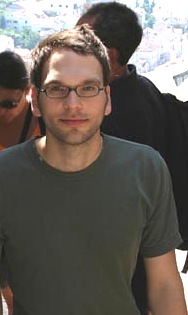 Born in Osnabrück, Poller began his composition studies in 1996 at the Hochschule für Musik Detmold, continuing with Prof. Walter Zimmermann at the Universität der Künste Berlin (UdK). After an exchange year at the Royal College of Music London in 2003, he received his diploma and returned to Berlin where he’s just finished his postgraduate work. Since 1999 he’s also been studying German Literature, Philosophy and Musicology at the Humboldt-University in Berlin. Last year, as participant of the Global-Interplay-project, he attended conferences in Accra, Ghana.
Born in Osnabrück, Poller began his composition studies in 1996 at the Hochschule für Musik Detmold, continuing with Prof. Walter Zimmermann at the Universität der Künste Berlin (UdK). After an exchange year at the Royal College of Music London in 2003, he received his diploma and returned to Berlin where he’s just finished his postgraduate work. Since 1999 he’s also been studying German Literature, Philosophy and Musicology at the Humboldt-University in Berlin. Last year, as participant of the Global-Interplay-project, he attended conferences in Accra, Ghana.
Tom is especially interested in the temporal aspect of music (including polyrhythmical/polymetrical music); music theater — or more generally, various forms of musical representation; the relation between music and language; the philosophy of music (especially music and the emotions, music and understanding). His music is deeply rooted in the western European musical tradition, but is greatly influenced by its lesser known aspects (e.g. medieval and renaissance music, rhetorical aspects of baroque music).
His website shows off all of these interests; his music page there is especially generous about providing quality listening to his already-amazing pieces (the recordings and performances are generally top-notch). This is someone to keep an eye on in the coming years.
………………….
Tristan Fuentes (b. 1951 — Mexico), Joe Holmquist (b. 1951 — US)
The official word is:
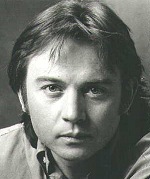 Tristan Fuentes, born 1951 in Mexico City, is the son of a school teacher and barrister. His first ensemble experience was “Cherub Choir” as a five-year-old, and piano studies followed at age six. In the fifth grade he had the opportunity to join the class band. It was denied that he play trumpet but firmly suggested that he play drums. At age fifteen he organized his first combo and started playing professionally.
Tristan Fuentes, born 1951 in Mexico City, is the son of a school teacher and barrister. His first ensemble experience was “Cherub Choir” as a five-year-old, and piano studies followed at age six. In the fifth grade he had the opportunity to join the class band. It was denied that he play trumpet but firmly suggested that he play drums. At age fifteen he organized his first combo and started playing professionally.
As a university student he pursued a dual track of classical music and rock & roll. In his mid-twenties he studied percussion, music theory, and composition at the New England Conservatory and suffered under the tutelage of Gunther Schuller. Upon his liberation with a Master of Music degree, he set upon a diverse life of people, places, languages, and art objects. His main compositional influences have been Terry Riley, John Cage, and Frederic Rzewski. His works are primarily for small instrumental ensembles, often including exotic percussion.
Fuentes describes his music as “liberated minimalism”. As a theory and composition student he was trained in the tradition of Paul Hindemith and the later serialists, while outside of class he was listening to and playing rock, jazz, and minimalist music. His works are characterized by catchy melodies and strong rhythms. Harmonically the music is tonal, with dissonance as the main device for creating tension between compositional elements.
Or…
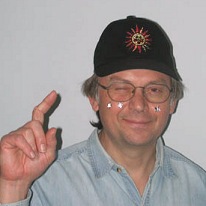 Joe Holmquist was born in 1951 in Benson, Minnesota, a medium-sized community out in the west-central part of the state (in this case, medium-sized means 3,000 souls). There wasn’t much along the line of organized activities for kids, so it was common to participate in music organizations both at school and at church. “…At the time, I didn’t think I was learning anything in particular from those music activities, but I was!…”
Joe Holmquist was born in 1951 in Benson, Minnesota, a medium-sized community out in the west-central part of the state (in this case, medium-sized means 3,000 souls). There wasn’t much along the line of organized activities for kids, so it was common to participate in music organizations both at school and at church. “…At the time, I didn’t think I was learning anything in particular from those music activities, but I was!…”
His first ensemble experience was “Cherub Choir” as a five-year-old, and piano studies followed at age six. In the fifth grade he had the opportunity to join the class band. It was denied that he play trumpet but firmly suggested that he play drums. At age fifteen he organized his first combo and started playing professionally.
As a university student he pursued a dual track of classical music and rock & roll. In his mid-twenties he studied percussion, music theory, and composition at the New England Conservatory and suffered under the tutelage of Gunther Schuller. Upon his liberation with a Master of Music degree, he set upon a diverse life of people, places, languages, and art objects. His main compositional influences have been Terry Riley, John Cage, and Frederic Rzewski. His works are primarily for small instrumental ensembles, often including exotic percussion.
Holmquist describes his music as “liberated minimalism”. As a theory and composition student he was trained in the tradition of Paul Hindemith and the later serialists, while outside of class he was listening to and playing rock, jazz, and minimalist music. His works are characterized by catchy melodies and strong rhythms. Harmonically the music is tonal, with dissonance as the main device for creating tension between compositional elements.
Hmmm… The truth is what we will, right? And the truth is that Joe’s site, besides highlighting his excellence as a percussionist, kindly hosts a wealth of Tristan Fuentes pieces in MP3. Bright, propulsive and non-cheesily tuneful, They’re well worth getting to know.

 It seems somehow fitting after a week of inexplicable madness that
It seems somehow fitting after a week of inexplicable madness that 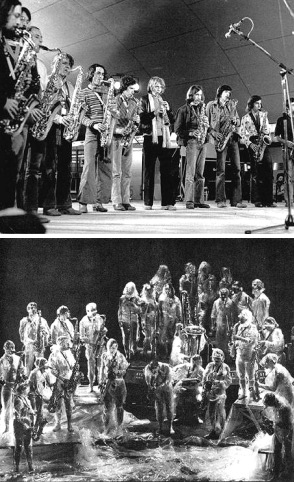 Urban Sax is a long-running ensemble / musical extravaganza founded by the French musician Gilbert Artman. It was was formed in 1973, when Artman organized a concert by a group of eight saxophonists at a classical music festival in the south of France. In subsequent years, the number of players grew to 12, 20, 30, and by now consists of 52 musicians (with saxophones ranging from the soprano to bass registers). Artman frequently integrates local musicians and dancers into his performances, and thus the ensemble can encompass as many as 200 performers.
Urban Sax is a long-running ensemble / musical extravaganza founded by the French musician Gilbert Artman. It was was formed in 1973, when Artman organized a concert by a group of eight saxophonists at a classical music festival in the south of France. In subsequent years, the number of players grew to 12, 20, 30, and by now consists of 52 musicians (with saxophones ranging from the soprano to bass registers). Artman frequently integrates local musicians and dancers into his performances, and thus the ensemble can encompass as many as 200 performers.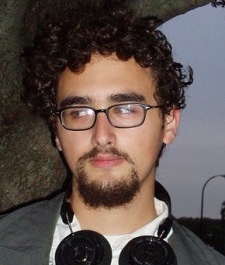 I started composing when I was 11, on a family trip to Italy. My earliest influence was Bach, and after that, Hindemith, Prokofiev and Bartók. When I was 15 I discovered rock (by means of “Strawberry Fields Forever” and “I Am The Walrus”), and when I was 17 I discovered the experimental rock underground (by means of The Olivia Tremor Control, Kukl, Mr. Bungle and Thinking Plague). Those two discoveries got me interested in combining ideas from the scored-music world and ideas from the rock world, and since then I’ve been exploring various ways of bringing disparate materials together — not just rock and scored music, but really anything. I got my BA at Yale in 2005, and am currently working towards my MA at the University of Michigan, where I’m studying with Erik Santos.
I started composing when I was 11, on a family trip to Italy. My earliest influence was Bach, and after that, Hindemith, Prokofiev and Bartók. When I was 15 I discovered rock (by means of “Strawberry Fields Forever” and “I Am The Walrus”), and when I was 17 I discovered the experimental rock underground (by means of The Olivia Tremor Control, Kukl, Mr. Bungle and Thinking Plague). Those two discoveries got me interested in combining ideas from the scored-music world and ideas from the rock world, and since then I’ve been exploring various ways of bringing disparate materials together — not just rock and scored music, but really anything. I got my BA at Yale in 2005, and am currently working towards my MA at the University of Michigan, where I’m studying with Erik Santos.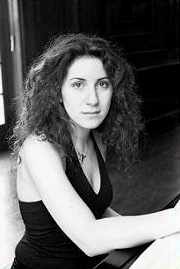 Lainie and Alex were at Yale together, and they share a lot of the same anything-goes spirit. She received her BA in music from Yale in 2004, studying with John Halle, Matthew Suttor, and Kathryn Alexander. She also snagged a second BA in Near-Eastern languages and civilizations, specializing in the religious chant traditions of the middle east. She studied Torah cantillation with Rebecca Boggs and Quranic chanting with Dr. Abd al Hamid. If I’ve got it right, she’s currently teaching at St. Ann’s School in Brooklyn.
Lainie and Alex were at Yale together, and they share a lot of the same anything-goes spirit. She received her BA in music from Yale in 2004, studying with John Halle, Matthew Suttor, and Kathryn Alexander. She also snagged a second BA in Near-Eastern languages and civilizations, specializing in the religious chant traditions of the middle east. She studied Torah cantillation with Rebecca Boggs and Quranic chanting with Dr. Abd al Hamid. If I’ve got it right, she’s currently teaching at St. Ann’s School in Brooklyn. Born in Osnabrück, Poller began his composition studies in 1996 at the Hochschule für Musik Detmold, continuing with Prof. Walter Zimmermann at the Universität der Künste Berlin (UdK). After an exchange year at the Royal College of Music London in 2003, he received his diploma and returned to Berlin where he’s just finished his postgraduate work. Since 1999 he’s also been studying German Literature, Philosophy and Musicology at the Humboldt-University in Berlin. Last year, as participant of the Global-Interplay-project, he attended conferences in Accra, Ghana.
Born in Osnabrück, Poller began his composition studies in 1996 at the Hochschule für Musik Detmold, continuing with Prof. Walter Zimmermann at the Universität der Künste Berlin (UdK). After an exchange year at the Royal College of Music London in 2003, he received his diploma and returned to Berlin where he’s just finished his postgraduate work. Since 1999 he’s also been studying German Literature, Philosophy and Musicology at the Humboldt-University in Berlin. Last year, as participant of the Global-Interplay-project, he attended conferences in Accra, Ghana. Tristan Fuentes, born 1951 in Mexico City, is the son of a school teacher and barrister. His first ensemble experience was “Cherub Choir” as a five-year-old, and piano studies followed at age six. In the fifth grade he had the opportunity to join the class band. It was denied that he play trumpet but firmly suggested that he play drums. At age fifteen he organized his first combo and started playing professionally.
Tristan Fuentes, born 1951 in Mexico City, is the son of a school teacher and barrister. His first ensemble experience was “Cherub Choir” as a five-year-old, and piano studies followed at age six. In the fifth grade he had the opportunity to join the class band. It was denied that he play trumpet but firmly suggested that he play drums. At age fifteen he organized his first combo and started playing professionally. Joe Holmquist was born in 1951 in Benson, Minnesota, a medium-sized community out in the west-central part of the state (in this case, medium-sized means 3,000 souls). There wasn’t much along the line of organized activities for kids, so it was common to participate in music organizations both at school and at church. “…At the time, I didn’t think I was learning anything in particular from those music activities, but I was!…”
Joe Holmquist was born in 1951 in Benson, Minnesota, a medium-sized community out in the west-central part of the state (in this case, medium-sized means 3,000 souls). There wasn’t much along the line of organized activities for kids, so it was common to participate in music organizations both at school and at church. “…At the time, I didn’t think I was learning anything in particular from those music activities, but I was!…”